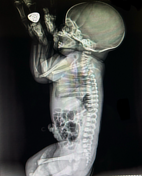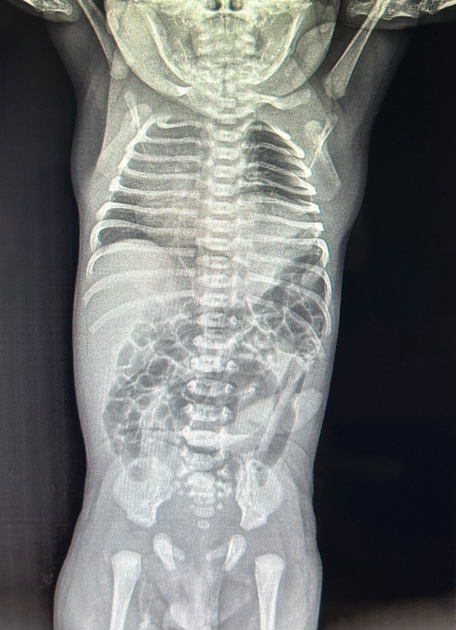Presentation
Full-term newborn, delivered via cesarean section, presents with respiratory distress.
Patient Data



Soft tissue opacity is seen in the left lung base, accompanied by contralateral shifting of the mediastinum on the frontal radiograph. On the lateral radiograph, soft tissues appear to protrude in the posterior part of the left lung, along with discernible bowel loops. The margin of the left diaphragm is not well delineated.
Case Discussion
This full-term newborn, delivered via cesarean section, presents with respiratory distress. Radiographic findings indicate a soft tissue opacity in the left lung base, accompanied by contralateral mediastinal shifting on the anteroposterior (AP) view. Additionally, on the lateral radiograph, soft tissues appear to protrude in the posterior part of the left lung, along with noticeable bowel loops. The margin of the left diaphragm lacks clear delineation.
These observations raise suspicion of a Bochdalek hernia as a potential diagnosis, with eventration being considered in the differential diagnosis.
Additional contributors:
Dr Madan Karmakar
Dr Sohini Sengupta
Dr Samarjit Kotal




 Unable to process the form. Check for errors and try again.
Unable to process the form. Check for errors and try again.